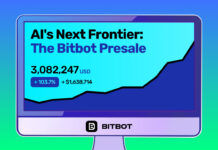Bitcoin is a digital currency, it does not operate under the rules that govern other currencies and therefore does not take a physical form. However, artist Matthias Dörfelt decided to create a project named Block Bills, as an artistic contribution to the blockchain technology space. Dörfelt unveiled his version of what a bitcoin would look like if it were to be turned into physical bills.
The blockchain, bitcoin’s underlying technology, is viewed as one of the most disruptive technological advancements of this age, with a broad range of applications such as the supply chain, identity, and financial inclusion among others.
“From a technology standpoint, the blockchain, which was invented through bitcoin, is one of the most groundbreaking things that came along in the past couple years,” Dörfelt says.
“Bitcoin itself is worth so much money, and it’s so important nowadays that it was something on my mind,” he adds alluding to the growth that bitcoin, and many other digital currencies, have witnessed in the past few months. The price of bitcoin has recently inched close to the $3000 mark.
In order to create the “block bills,” Dörfelt wrote a code that allowed him to create a visual representation using certain data linked to a block on the bitcoin blockchain. The bills were created from 64 randomly chosen blocks.
When a block’s hash number was fed into his program, it was able to produce something visually similar to the currency bills that are in use now, albeit with a few differences.
Firstly, the number at the top right of the bills don’t denote the value of a bitcoin, rather the block’s transfer volume. Transfer volume refers to the number of transactions that occur during a specific duration, that is recorded in a block.
Secondly, the bills have numbers on the bottom right, similar to normal currency bill serial numbers, that stand for the time that the bitcoin was mined, via a typeface invented by Dörfelt. The artist also designed a group of visual symbols that substitute hexadecimal numbers. Hash numbers are recorded in the hexadecimal numbering system thus using his symbols; he created a series of symbols that visually represent this number and run along the bottom of each bill.
Lastly, the bills have a signature which is the only handwritten part of the bills as each bill is created by the code he wrote. Dörfelt signs Satoshi on each bill, referencing the anonymous creator/creators of the currency.
All the bills have an abstract face in the middle, which can be interpreted in a number of ways. It could be a nod to the decentralized nature of the currency, the anonymity of its creator and the semi-anonymity it provides to its users, or according to the artist, a person celebrating the value of the bill. The striking project can be viewed here.

Btcmanager.com is author of this content, TheBitcoinNews.com is is not responsible for the content of external sites.
Our Social Networks: Facebook Instagram Pinterest Reddit Telegram Twitter Youtube











